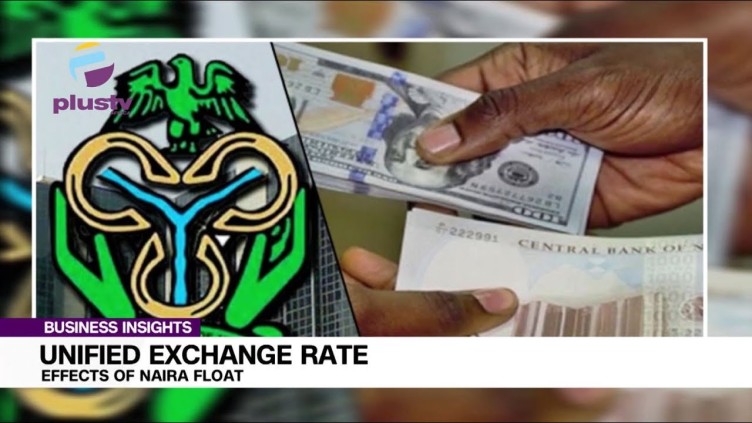By Ibrahim Shelleng
The Central Bank of Nigeria (CBN) announced the unification of the multiple exchange rate system on Wednesday, 14th June 2023, bringing about an end to a controversial foreign exchange policy that has had a significant impact on the Nigerian Economy for the last seven years. Initially introduced as a measure to manage depleting foreign exchange (FX) reserves, amidst fluctuating global oil prices and to prioritize allocation of FX to essential sectors, such as manufacturing, agriculture, and critical imports, while discouraging non-essential imports. Its effectiveness and impact on the Nigerian economy have been subject to debates and criticisms, particularly regarding market distortions, transparency, and arbitrage opportunities. Furthermore, a report from the World Bank in 2021 highlighted the economic costs of the policy amounted to $144.1 billion between 2017 and the first quarter of 2021. It is important to note that the reasons behind the adoption of the multiple exchange rate system were grounded in economic considerations and policy objectives. Therefore, this article delves into the economic philosophy behind this system and examines its consequences on Nigeria’s economic growth, stability, and development.
Exchange Rate Management
For the sake of context, let us examine the ways in which countries manage their exchange rate (aka exchange rate regimes). There are essentially two main regimes used by most countries, fixed and floating exchange rate systems.
Fixed Rate System: Some countries have a fixed rate exchange rate system. It means their money is set to a specific value compared to other currencies. This fixed rate is determined by the government or the central bank of the country. Sometimes, the government or central bank needs to take actions to keep the fixed rate, like buying or selling currencies. Essentially, the government subsidizes the exchange rate, using the country’s foreign reserves, to keep it fixed. This can be beneficial to small economies to help stabilize the currency and make international trade less volatile and more predictable. It also controls inflation for import dependent countries.
Floating Rate System: In this system, the exchange rate is determined by market forces i.e. supply and demand. If there is more demand for a country’s currency, then the country’s currency will appreciate and vice versa. This system requires no intervention from the government or central bank and is typically used in more advanced economies as it reduces the need for intervention using foreign reserves. The country can concentrate on other aspects of monetary policy to tackle domestic economic goals such as managing inflation and stimulation growth.
Most countries use different variations of these two exchange rate management systems depending on their economic circumstances. For a more in-depth understanding, please check out the link to the CBN’s understanding monetary policy series (https://www.cbn.gov.ng/out/2022/mpd/series%208.pdf).
Understanding the Multiple Exchange Rate System

The historical context and reasons behind the adoption of the multiple exchange rate system in Nigeria can be understood within the broader economic and political landscape of the country. Let us examine the key factors that influenced its adoption:
- Oil Dependency: Nigeria, as a major oil exporter, has historically relied heavily on oil revenue to drive its economy. Fluctuations in global oil prices have a significant impact on Nigeria’s foreign exchange earnings and overall economic stability. As oil prices experienced volatility over the years, Nigeria faced challenges in managing its currency and ensuring a stable exchange rate.
- Limited Foreign Exchange Reserves: Nigeria has faced challenges in managing its foreign exchange reserves, which serve as a buffer against external shocks, due to lower oil prices and capital outflows. This scarcity of foreign exchange reserves necessitated a more controlled allocation of available resources. The multiple exchange rate system allowed the CBN to allocate scarce foreign exchange resources, ensuring their availability for critical imports, debt servicing, and strategic national priorities.
- External Debt Burden: Nigeria has grappled with a substantial external debt burden in the past. Managing foreign exchange to service external debts while ensuring adequate reserves for essential imports became a significant consideration.
- Structural Adjustment Programs: In the 1980s and 1990s, Nigeria implemented Structural Adjustment Programs (SAPs) under the guidance of international financial institutions. These programs aimed to address economic imbalances, promote fiscal discipline, and encourage market-oriented reforms. As part of SAPs, multiple exchange rate systems were sometimes adopted as a means to manage foreign exchange in line with the prescribed economic reforms.
- Import Substitution and Industrial Policy: Nigeria has long sought to reduce its import dependence and diversify its economy by promoting domestic industries. The multiple exchange rate system was seen as a tool to incentivize local production, provide favorable rates to targeted industries, and foster import substitution.
- Foreign Exchange Control: The introduction of the multiple exchange rate system allowed the Central Bank of Nigeria (CBN) to exercise greater control over foreign exchange allocation. Different exchange rates were designed to prioritize critical sectors, discourage non-essential imports, and manage scarce foreign exchange resources but also as part of Anti Money Laundering/Counter Financing of Terrorism (AML/CFT) measures.
The Economic Impact of the Multiple Exchange Rate Policy
Undoubtedly, every economic decision has its pros and cons. After all, the essence of economics is about management of scarce resources and equitable distribution amongst people. The multiple exchange rate system implemented by the CBN in recent years has impacted the Nigerian economy in some key areas but we will focus on the following:
- Inflation and Economic Growth
- Investment and Capital Flows
- Trade and Foreign Exchange
Nigeria heavily relies on imports, including essential commodities and intermediate goods. The multiple exchange rate system affected the prices of imported goods and contributed to price distortions and market inefficiencies, as different rates applied to various import categories. Fluctuations in exchange rates increased the cost of imported goods, thereby fueling imported inflation. This, in turn, affected domestic prices and added to overall inflationary pressures, making it more difficult for CBN to control prices using monetary policy. The CBN tried to gradually increase interest rates to tackle the inflation but this was largely futile. Consequently, the increase in interest rates have been to the detriment of economic growth as businesses borrow at higher rates leading to increased production costs. Furthermore, the arbitrage opportunities created by the multiple exchange rate system reduced the incentive for production as those that were able to get foreign exchange at the official rate, simply needed to round trip the funds to the parallel (black) market for instant, risk-free profits.

The multiple exchange rate eroded investor confidence, making it difficult for investors to accurately value their investments, leading to capital flight. Investors prefer stability and predictability when making investment decisions. The existence of multiple exchange rates created uncertainty and raised concerns about transparency and consistency in currency valuation. Imagine an investor bringing funds to Nigeria and exchanging at the official rate. Upon exiting the investment, the investor could not repatriate funds at the official rate due to FX illiquidity and was left with no option but to source from the parallel market at almost double the rate! This happened to numerous foreign companies, and negatively affected investor confidence, leading to a reduction in both foreign direct investment (FDI) and portfolio investment inflows. FDI had reduced to around $752 million in Dec 2022, from almost $2 billion in 2013.
The multiple exchange rate system affected the competitiveness of Nigerian exports and imports. Different exchange rates for different sectors led to disparities in the cost of imported inputs and exported goods. Industries that relied heavily on imported inputs faced higher production costs, reducing their competitiveness in the global market. Conversely, sectors with favorable exchange rates for exports experienced increased competitiveness. Under the multiple exchange rate system, the CBN allocated foreign exchange to different sectors based on priority and policy objectives. This affected the availability of foreign exchange for businesses and individuals. However, the priority sectors (agriculture, manufacturing etc.) that received subsidized exchange rate from the CBN certainly showed steady growth within the period.

Floating to Economic Development?
It remains to be seen how the unification of the exchange rate will impact on the economy in the future. However, what is certain is that the multiple rate system was amongst major economic policy decisions that were detrimental to economic development. Despite its efforts to promote key domestic sectors of the economy with FX allocations, the costs far outweighed the benefits. What can we expect going forward? Well, the positives to the economy are already evident as the stock market jumped to a 15-year high. Nigerian Eurobond prices have increased as a clear sign of positive investor sentiments. The Naira to USD exchange rate will undoubtedly remain volatile in the short term but is expected to stabilize around the 600/650 mark as backlog of demand is gradually settled amidst an anticipated influx of portfolio investments and FDI. However, we must be mindful that global inflation exacerbated by the ongoing Russia-Ukraine crises has meant raising of interest rates in major developed countries such as the USA and UK. This may deter portfolio investors from yield seeking in riskier climes such as Nigeria.

What of the inflationary pressures expected from the currency devaluation? Technically, there should not be a significant uptick in inflation because the majority of businesses that were not had been sourcing FX for importation at the parallel market for some time now. If anything, the unification of rates will eventually lead to reduced importation costs as increased liquidity will make it easier for businesses to source FX. Although, it may also be used as an excuse by market traders to increase prices. “Dollar has gone up”.
Adopting a free market approach certainly comes with benefits and drawbacks like any other economic model. Free markets emphasize principles such as efficiency, competition, and market-driven exchange rates and overall economic growth. Competition and free trade enable specialization, innovation, and the efficient allocation of resources across borders. However, with poor infrastructure, high production costs and a weak export base, it could also spell disaster for the currency and further spike inflationary pressures.
Balancing these competing interests is a complex task for policymakers. They must consider the need to protect domestic industries and workers while also promoting the efficiency, competition, and growth associated with free markets. Striking the right balance requires careful policy design, including targeted support for domestic industries, structural reforms to enhance competitiveness, and measures to address any negative externalities associated with free trade. For now though, let us buckle up for a thrilling ride ahead with no special FX or illusions. Nigeria is reopened for business!



